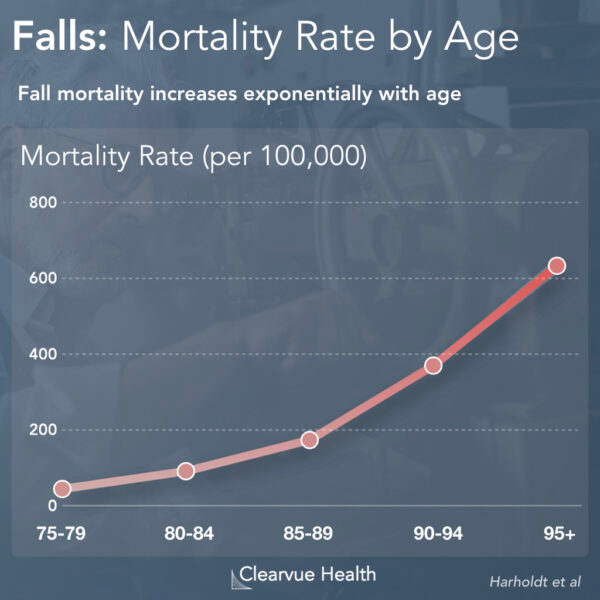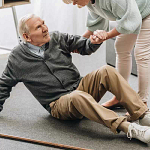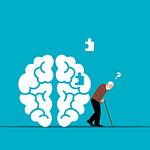Introduction to Falls and Their Impact on Health
As we age, the risk of falls significantly increases, often leading to severe health consequences. Studies reveal that one in four American adults aged 65 and older falls each year, with falls being the leading cause of fatal and non-fatal injuries in this age group. [Insert Image 1 Here]

Several factors contribute to these falls, including physical conditions like poor balance and visual impairment, as well as environmental factors such as home hazards. Beyond the immediate physical injuries, falls can also have a profound impact on overall health, often leading to a decline in mobility and independence.
Understanding the causes and impacts of falls is crucial in developing effective strategies for fall prevention. This knowledge can further inform the connection between physical activity and fall prevention, highlighting the role of regular exercise in enhancing balance, strength, and overall health. Stay tuned as we delve deeper into the relationship between physical activity and fall prevention in the following sections.
Understanding the Role of Physical Activity in Health
Physical activity plays a pivotal role in maintaining overall health, irrespective of age. Engaging in regular physical activity not only boosts stamina but also enhances mental wellbeing. According to the Centers for Disease Control and Prevention, it can help prevent chronic diseases like heart disease, stroke, type 2 diabetes, and even certain types of cancer.

Benefits of Physical Activity for All Age Groups
Physical activity contributes significantly to maintaining strength and balance, particularly as we age. The National Institute on Aging suggests that older adults who stay active are less likely to fall and are more capable of performing daily tasks independently.
Prevention of Diseases and Conditions
Regular physical activity is a powerful tool in the prevention of various diseases and conditions. A study by The National Center for Biotechnology Information demonstrates that it can decrease the risk of cardiovascular diseases, certain cancers, cognitive decline, and depression, to name a few. Regular physical activity is an essential component of a healthy lifestyle.

Physical Activity and Fall Risk: A Strong Connection
Research has long demonstrated a clear connection between physical activity and a reduced risk of falls. Studies, such as the one by Sherrington et al., reveal that regular exercise can significantly decrease the risk of falls in older adults by as much as 23%.

Improving Balance and Strength
Physical activity plays a pivotal role in enhancing balance and strength. Regular exercise, particularly strength-training and balance-improving activities, can fortify muscles and improve agility, leading to a decrease in fall incidents. Centers for Disease Control and Prevention suggests exercises like Tai Chi for its balance-improving benefits.
Enhancing Gait and Coordination
Physical activity also improves gait and coordination, critical factors in preventing falls. A study in PLOS ONE noted that physical activity programs focusing on gait and mobility exercises could substantially reduce fall risk.

Types of Physical Activities that Can Reduce Fall Risk
Physical activity plays an essential role in fall prevention. Various types of exercises contribute to enhancing strength, balance, flexibility, and endurance, which are crucial for reducing fall risk.
Strength Training Exercises
Strength training exercises build muscle, increase bone density, and improve balance. These improvements significantly lower the risk of falls among seniors.

Balance Exercises
Balance exercises like Tai Chi or yoga can enhance coordination and stability, reducing the likelihood of falls. Studies have shown that individuals who regularly engage in balance exercises experience fewer falls.
Flexibility and Endurance Exercises
Flexibility exercises, such as stretching, can enhance joint function and muscle health, vital for maintaining balance and preventing falls. Similarly, endurance exercises like walking or swimming improve heart health and stamina, further reducing the risk of falls. More physical activity leads to better overall health, which in turn reduces fall risk.

Case Studies: Success Stories of Fall Prevention Through Physical Activity
Physical activity is a crucial factor in fall prevention. Let’s explore some inspirational success stories of individuals and communities who have significantly reduced their fall risk through regular exercise.
Meet James, a 73-year-old retiree who took up daily walking after a minor fall. Within just six months, his improved strength and balance reduced his fall risk considerably.
Another example is the community initiative in Missouri where group exercise classes were introduced for seniors. The participants witnessed lower fall rates, increased mobility, and better overall health.
Programs like A Matter of Balance have been successful in not only reducing fall rates but also in improving the participants’ confidence and independence.

These real-life stories and examples underscore the vital connection between physical activity and fall prevention, demonstrating that regular exercise is a key ingredient in a fall-prevention strategy.
For an enhanced understanding, consider adding an infographic showing the correlation between physical activity levels and fall rates among seniors.
Barriers to Physical Activity for Older Adults
Physical activity is a critical component in preventing falls among older adults. However, several barriers often impede the elderly from engaging in regular exercise. Common challenges include fear of injury, health issues, lack of motivation, and absence of support systems (CDC). Each of these barriers contributes to a sedentary lifestyle, which in turn, increases the risk of falls.

Overcoming Barriers to Physical Activity
Strategies to overcome these barriers include modifications in exercise routines, adaptations to health conditions, and the incorporation of support systems. It’s crucial to tailor exercises to the individual’s capacity, gradually increasing intensity to build strength and balance (NIA). Adapting to health conditions may involve seeking medical advice before initiating an exercise program. Lastly, support systems can motivate older adults, making physical activity a social experience.
Safety Considerations for Physical Activity in Older Adults
Physical activity plays a pivotal role in fall prevention for older adults, but it’s essential to approach it with safety in mind. Here are key considerations to ensure a safe physical activity regimen:
Consult a Healthcare Provider
Before embarking on a new physical activity regime, it’s crucial to consult with a healthcare provider. They can provide personalized advice based on your health history and current condition, ensuring your physical activity aligns with your capabilities and limitations.

Integrate Physical Activity into Daily Routines
Gradually incorporating physical activity into daily routines can make the transition easier and safer. Begin with light activities like walking or gardening, and gradually increase intensity as your body adjusts. This CDC guide offers practical tips.
Proper Equipment and Environment
The right equipment and environment are key to ensuring safety during physical activity. This could involve wearing appropriate footwear, using assistive devices if necessary, and ensuring the exercise area is free from hazards. The National Institute on Aging provides valuable insights.

Conclusion: The Vital Role of Physical Activity in Fall Prevention
The importance of physical activity in fall prevention cannot be overstated. As we’ve seen throughout this article, there is a robust, statistically significant link between regular physical activity and reduced risks of falls, particularly among older adults.
It’s crucial for older adults to understand this link and be encouraged to engage in regular physical activity – even simple daily exercises can make a significant difference.

However, the responsibility doesn’t lie solely with individuals. Healthcare providers, caregivers, and communities also need to step up to promote physical activity for fall prevention. This could mean providing resources, organizing regular exercise sessions, or building senior-friendly fitness facilities.
Here are some guidelines for appropriate physical activities for older adults, courtesy of the National Council on Aging.
Together, we can ensure healthier, safer lives for our senior citizens by prioritizing physical activity and reducing the risk of falls. Let’s get moving.
.





